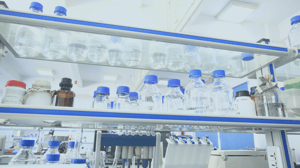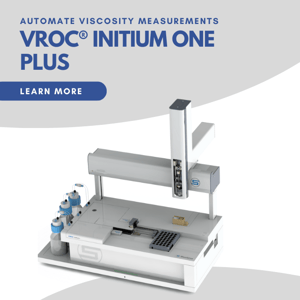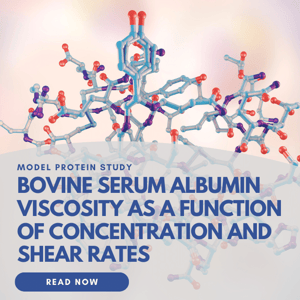
Viscosity of Biological Samples: Dilute Formulation Characterization to Predict Product Performance
Webinar Download
VROC® intium combines the benefit of VROC® technology with the convenience of an automatic sampling system making it ideal for more in depth characterization of biologically relevant samples.
The advantages over other more traditional options include a sealed channel of microscale dimensions with a known and well controlled flow field. One highly informative viscosity measurement protocol that can be easily implemented with the initium involves a series of low concentration samples.
Preliminary data obtained for Bovine serum albumin, γ-globulin, and monoclonal antibodies suggest the possibility of predicting viscosity values at product concentrations which are well beyond the dilut limited required for the intrinsic viscosity measurements. Relationships from fluid mechanics, along with this product viscosity estimate in the concentrated regime and known syringe properties, could then be used to approximate the required injection force. Therefore, viscosity measurements with very low levels of active ingredient could potentially provide insight into the product performance and application.
Speaker Bio — Dr. Stacey Elliott
This webinar is created and presented by Principal Scientist, Dr. Stacey Elliott. She has obtained an extensive experience in the rheology of colloid and polymer systems during her previous positions at Alcon and DuPont. She is excited to work with our customers to advance the analysis and interpretation of protein rheology beyond the models currently adopted from dispersions and synthetic polymers.
.jpeg?width=300&name=Woman%20scientist%2c%20documents%20and%20hands%20writing%20_575258496-min(1).jpeg)


.png?width=200&height=58&name=RheoSense%20Logo%20(REGISTERED).png)


-1.png?width=300&name=LNP%20m-VROC%20II%20App%20Note%20Tile%20(small)-1.png)
